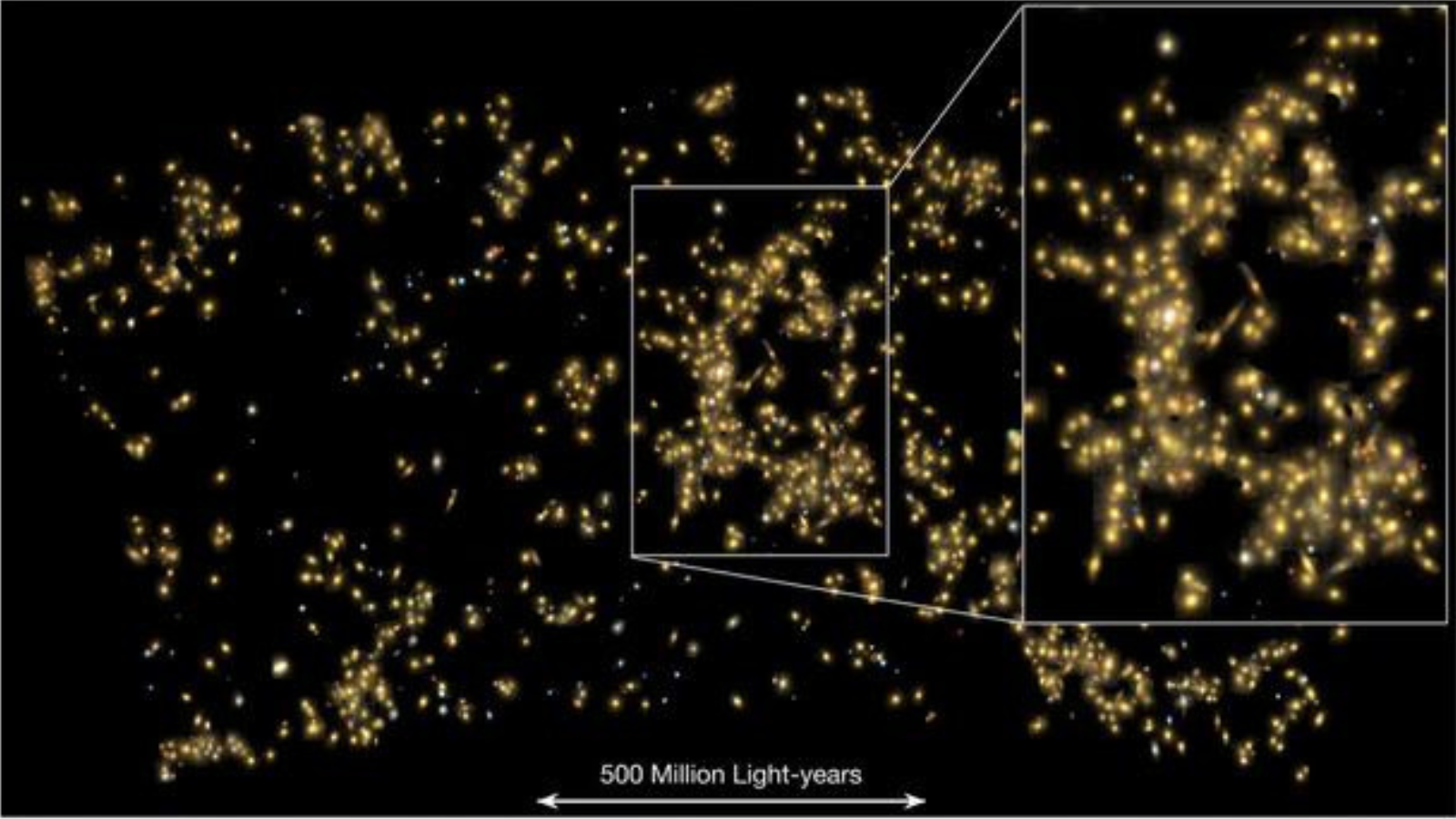
Astronomers have discovered a cavalcade of monster galaxy superclusters, incredibly massive collections of galaxies and galaxy clusters in the universe.
The most striking example of these 662 new superclusters is located around 3 billion light-years away from Earth and has been named the "Einasto Supercluster." This particular supercluster is named in honor of Estonian astrophysicist Jaan Einasto, one of the discoverers of the large-scale structure of the universe.
The Einasto Supercluster is staggering in terms of its sheer size and mass. It contains the same mass as around 26 quadrillion suns (26 followed by 15 zeroes). This supercluster is so vast, in fact, that it would take a light signal 360 million years to travel from one side of it to the other.
The findings could help scientists better understand how these vast collections of galaxies come together. Down the line, it could also help answer questions about dark matter and dark energy.
While the rest of the superclusters can't measure up to the Einasto Supercluster, they are certainly no slouches in the mass or size department.
From the sample discovered, this team, led by astronomers from Tartu Observatory, was able to calculate the average supercluster mass and size.
The researchers determined that the typical mass of a supercluster in this collection is around 6 quadrillion solar masses, while the typical size of a supercluster is around 200 million light-years across. To put this into perspective, the average supercluster is around 2,000 times larger than the Milky Way.
In terms of mass, if the sun were the same mass as a golf ball, one of these superclusters would have the same mass as Mount Everest.
While exploring the properties of these superclusters, the team found that the clusters of galaxies within the superclusters are heavier than those found outside the superclusters. This demonstrates that galaxies in superclusters grow and evolve differently from galaxies outside such environments.
Despite the tremendous mass of the superclusters, however, their individual galaxies are less dense than other galaxies because this incredible mass is spread across vast volumes.
Still, densities of the supercluster galaxies are great enough to have a tremendous gravitational impact on the matter in superclusters themselves. This includes the superclusters' dark matter content, which is the universe's most mysterious form of matter as it remains effectively invisible to human eyes because it doesn't interact with light.
Further investigations of these superclusters could help get to the bottom of another of the universe's most pressing mysteries: The nature of dark energy.
Dark energy is the placeholder name given to the force that causes the expansion rate of the universe to accelerate. This has the net effect of making galaxies race away from us, and from each other, faster and faster as times goes by.
Interestingly, however, the team behind these findings observed that galaxies in these superclusters appeared to be separating at lower expansion speeds than expected. The scientists believe dark energy may eventually overwhelm the gravitational attraction between galaxies in a supercluster, so studying these systems could help answer questions about troubling discrepancies observed in the universe's rate of expansion.
The team's research was published in November 2023 in the Astrophysical Journal.







